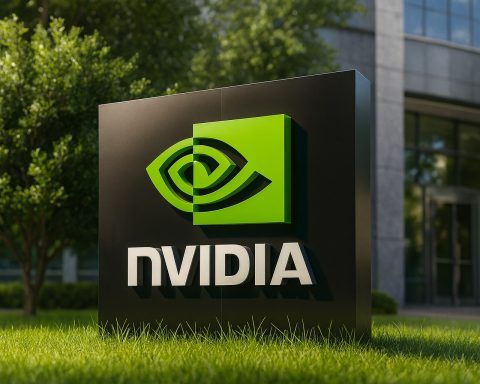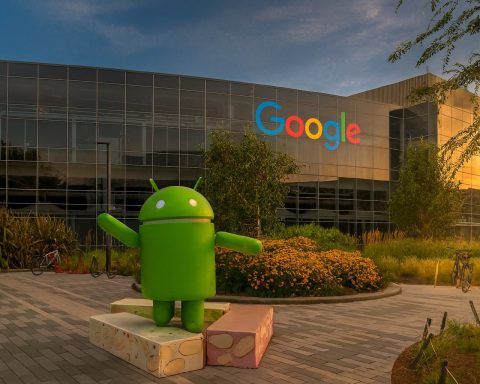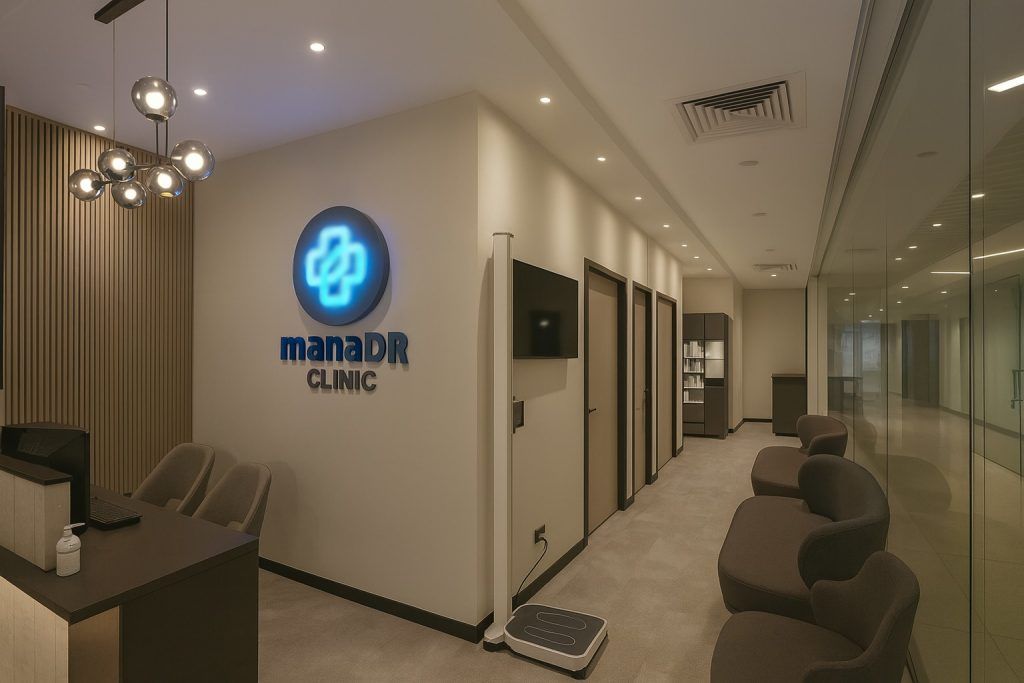After a brutal month that wiped out roughly half its market value, Nvidia‑backed CoreWeave, Inc. (CRWV) is trying to stage a comeback today as Wall Street re‑embraces the AI trade on the back of Nvidia’s blowout third‑quarter earnings.
As of the latest data, CoreWeave closed yesterday at $74.92 per share, down about 35% over the last 10 trading days and roughly 50% below its 52‑week high of $186.94, but is indicated sharply higher in pre‑market trading around $82, up nearly 10% on renewed AI optimism. [1]
CoreWeave stock today: Nvidia earnings trigger an AI “pick‑and‑shovel” rally
Nvidia’s blockbuster Q3 2025 earnings and bullish guidance have set off a broad rally in “picks and shovels” AI infrastructure names, and CoreWeave is squarely in that group.
- After‑hours and pre‑market move:
- Context:
- Despite today’s bounce, technical screens show CoreWeave is still down 34.5% over the last 10 sessions, with daily volatility above 8% and a 52‑week range of $33.51–$186.94. [4]
- A widely‑circulated Barchart/Yahoo Finance piece notes that CoreWeave just endured its worst week ever, framing the 50% monthly plunge as evidence that traders are becoming more selective in AI names. [5]
Benzinga characterizes the current move as part of a “pick‑and‑shovel rally” linked to Nvidia’s strong results, grouping CoreWeave with other AI infrastructure and data‑center plays that benefit from an extended AI build‑out cycle. [6]
Why CoreWeave crashed 50% in a month despite record Q3 revenue
Today’s rebound comes only days after CoreWeave’s latest earnings sparked a wave of selling.
Q3 2025 headline numbers
In an 10 November press release, CoreWeave reported: [7]
- Revenue: $1.36 billion for Q3 2025, up from $583.9 million a year earlier.
- GAAP operating income: $51.9 million (4% operating margin), down from 20% a year ago as infrastructure and financing costs surged.
- Net loss: $110.1 million (‑8% net margin), improved from a much steeper loss a year earlier.
- Adjusted EBITDA: $838.1 million at a robust 61% margin.
- Revenue backlog:$55.6 billion, nearly doubled year‑over‑year, driven by long‑term AI infrastructure contracts.
The company highlighted massive multi‑year agreements, including:
- Up to $14.2 billion in contracts with Meta.
- An expanded deal with OpenAI worth up to $6.5 billion, bringing total OpenAI commitments to roughly $22.4 billion. [8]
So why did the stock tank?
Despite those strong numbers, the market latched onto guidance and execution risk:
- Guidance cut and data‑center delays:
Reuters reported that CoreWeave trimmed its full‑year revenue outlook after delays with a key data‑center partner, even though the affected customer extended its contract so that the deal’s total value remains intact. [9] - Margin pressure:
Rising infrastructure costs, expensive AI chips, and intense competition for compute capacity have all compressed margins and stoked fears that profitability may lag revenue growth. [10] - Valuation reset:
A Blockonomi analysis notes that CRWV’s share price collapsed roughly 50% over the past month, even as revenue grew 13% quarter‑over‑quarter, arguing that a modest guidance tweak triggered an outsized reaction in an overheated AI trade. [11]
Several brokers cut their price targets following the Q3 print, citing operational risk around large‑scale AI data‑center builds—exactly the type of risk many investors had been worried about as AI infrastructure spending soared. [12]
Zero Egress Migration: CoreWeave’s new weapon in the AI cloud wars
A major part of the bullish narrative around CoreWeave is its attempt to make switching from hyperscale clouds less painful.
On 13 November 2025, CoreWeave launched its Zero Egress Migration (0EM) program, a “no‑egress‑fee” data‑migration offering designed to pull AI workloads off the big public clouds. [13]
Key points from the company’s announcement:
- No egress fees on initial migration: CoreWeave will cover the often‑punitive data‑transfer charges that AWS, Azure, Google Cloud, IBM, and Alibaba typically levy when customers move data out.
- Fully managed migrations: The company promises secure, validated, high‑speed dataset transfers handled end‑to‑end by CoreWeave’s team.
- CoreWeave AI Object Storage: Once data lands on CoreWeave, customers get a single global dataset plus access to its Local Object Transport Accelerator (LOTA), which the company says can deliver up to 7 GB/s per GPU, designed for massive model‑training workloads.
- Multi‑cloud flexibility: Customers can keep their accounts with incumbent clouds while using CoreWeave for the most performance‑sensitive AI workloads, without additional exit penalties if they later leave CoreWeave. [14]
Analyst coverage from InsiderMonkey/Finviz frames Zero Egress Migration as a key differentiator that makes CoreWeave a more practical and cost‑effective choice for enterprises exploring multi‑cloud AI strategies. [15]
Nvidia’s $6.3 billion safety net and strategic stake
CoreWeave’s fortunes are deeply intertwined with Nvidia—arguably more so than almost any other AI infrastructure stock.
A long‑term capacity backstop
A September SEC filing and subsequent RCR Wireless coverage revealed that Nvidia has agreed to spend up to $6.3 billion purchasing any of CoreWeave’s unused data‑center capacity through April 13, 2032. [16]
In practice, this means:
- If CoreWeave can’t fully fill its GPU capacity with its own customers, Nvidia is contractually obligated to buy the leftover compute—subject to certain performance and availability conditions. [17]
- The agreement gives CoreWeave unusually strong revenue visibility and reduces the risk of idle infrastructure in a downturn in AI demand.
Equity stake and ecosystem positioning
Blockonomi notes that Nvidia owns roughly 7% of CoreWeave’s equity, a stake that was valued near $900 million earlier this year, and has reportedly grown as Nvidia increased its position. [18]
This tight relationship has several implications:
- Upside: Nvidia’s own 62% year‑over‑year revenue growth in Q3 2025 and continued shortage of AI GPUs underscore the need for specialized partners like CoreWeave to turn chips into usable cloud compute. [19]
- Risk: As a recent Forbes piece warned, if Nvidia’s stock and AI demand were to cool meaningfully, highly leveraged beneficiaries including CoreWeave, Vertiv, and Super Micro could also see renewed pressure. [20]
CoreWeave itself called the Nvidia relationship a “$6.3 billion strategic collaboration” in its Q3 results, putting the chipmaker at the center of its long‑term growth story. [21]
Fundamentals snapshot: backlog, contracts and balance sheet
Even after the sell‑off, CoreWeave’s underlying business metrics look more like a fast‑growing hyperscale platform than a typical mid‑cap tech stock.
Massive backlog and power footprint
From the Q3 earnings release: [22]
- Revenue backlog: $55.6 billion as of 30 September 2025.
- Major new deals in Q3:
- Meta: up to ~$14.2 billion multi‑year contract.
- OpenAI: expanded agreements worth up to ~$6.5 billion (total ~$22.4 billion).
- AI infrastructure scale:
- Added ~120 MW of active power in Q3, bringing total active capacity to ~590 MW.
- Total contracted power now sits around 2.9 GW, spread across a diversified set of data‑center partners.
Capital structure and cash flows
Google Finance’s snapshot of CoreWeave’s September 2025 quarter shows: [23]
- Total assets: $32.9 billion
- Total liabilities: $29.0 billion
- Shareholders’ equity: $3.88 billion
- Net income (Q3): ‑$110.1 million
- Cash from operations (Q3): $1.69 billion
- Free cash flow: $268 million
To support its aggressive build‑out, CoreWeave has raised $1.75 billion in senior unsecured notes due 2031 and expanded multiple delayed‑draw term loan facilities at spreads of roughly SOFR + 4–4.25%, while also eliminating certain preferred‑stock put rights to boost equity. [24]
What analysts are saying: from downgrades to a $180 price target
Sentiment around CRWV is sharply divided.
- Bullish camp:
- H.C. Wainwright analyst Kevin Dede recently reiterated a Buy rating on CoreWeave with a $180 price target, calling out its strong fundamentals, $55.6 billion backlog, and contracts with blue‑chip customers like Meta and OpenAI. [25]
- Both InsiderMonkey and Blockonomi frame the recent plunge as a market overreaction, arguing that CoreWeave’s unit economics and growth prospects remain intact despite short‑term noise. [26]
- Cautious/negative camp:
- Reuters reports that at least six brokerages cut price targets after Q3, highlighting data‑center execution risk and the possibility that high infrastructure spending could outpace near‑term revenue. [27]
- Technical research platform StockInvest classifies CRWV as a “sell candidate” in the short term, citing broken upward trends, heavy volatility, and a sharp drawdown from recent highs. [28]
- A Barchart/Yahoo Finance column describes the 50% drop and “worst week ever” as a sign that some investors are questioning whether AI infrastructure names have run too far ahead of fundamentals. [29]
Adding to the mix, a recent Seeking Alpha piece titled “CoreWeave: AI Bubble Pops – Reiterate Strong Buy” argued that the post‑earnings sell‑off offers a long‑term entry point, again underscoring how polarized views have become. [30]
How CoreWeave positions itself in the AI cloud stack
CoreWeave’s own corporate overview describes it as “The Essential Cloud for AI,” focused on GPU‑accelerated workloads for AI, machine learning, and high‑performance computing. [31]
Key strategic pillars include:
- Specialized AI cloud, not a general‑purpose hyperscaler:
- CoreWeave’s data centers (in the U.S. and Europe) are purpose‑built for GPU clusters, with some facilities dedicated entirely to single large customers. [32]
- Tight Nvidia integration:
- CoreWeave touts being first to deploy Nvidia GB300 NVL72 systems and the RTX Pro 6000 Blackwell Server Edition at scale, targeted at frontier‑model training. [33]
- Software & tools stack:
- Recent acquisitions—OpenPipe, Weights & Biases, and Monolith AI—have broadened its software capabilities in reinforcement learning, experiment tracking, and applied ML tooling. [34]
- High‑profile customers:
- Beyond Meta and OpenAI, CoreWeave points to customers such as NASA’s Jet Propulsion Laboratory, financial institutions like Mizuho Bank, and various AI startups as evidence of its reach across industries. [35]
Key risks investors are watching
Even bullish commentators acknowledge that CoreWeave carries elevated risk compared with more mature cloud or semiconductor names:
- Execution risk on mega‑projects
- The November 11 Reuters piece made clear that delays at a single data‑center partner were enough to force a guidance cut and wipe billions off CoreWeave’s market value. Scaling from hundreds to thousands of MW introduces construction, power, and supply‑chain complexity. [36]
- Capital intensity and leverage
- Rapid expansion means high capex and substantial debt financing. Changes in interest rates, credit markets or equity valuations could constrain future build‑outs. [37]
- Dependence on Nvidia and AI demand
- The $6.3 billion capacity‑purchase deal with Nvidia is a double‑edged sword: it reduces utilization risk but further ties CoreWeave’s fate to Nvidia’s product cycles and the broader AI spending environment. [38]
- Competition from other AI clouds and hyperscalers
- Specialist rivals such as Lambda (which recently raised roughly $1.5 billion following a large Microsoft deal) and hyperscalers offering their own GPU instances keep pricing pressure high. [39]
- Valuation and sentiment swings
- With a market cap around $37 billion and no GAAP profitability yet, CoreWeave’s valuation is highly sensitive to changes in growth assumptions and risk appetite. The recent 50% round‑trip in a month is a stark example. [40]
Outlook: what today’s headlines mean for CoreWeave
Today’s Nvidia‑driven bounce doesn’t erase the last month’s pain, but it does underline one key point: CoreWeave’s story is still fundamentally tied to the broader AI infrastructure cycle.
On the positive side:
- Revenue growth remains explosive.
- Backlog and long‑term contracts suggest multi‑year visibility.
- Nvidia’s equity stake and capacity‑purchase agreement give CoreWeave a powerful strategic anchor.
- Zero Egress Migration and a deeper software stack position the company as more than “just GPU rentals.”
On the cautionary side:
- Execution missteps—especially around data‑center rollouts—are immediately punished.
- Margins are under pressure despite strong demand, and the company continues to post GAAP net losses.
- Valuation remains rich by traditional metrics, amplifying volatility when sentiment shifts.
For now, today’s market action suggests investors are willing to give CoreWeave another look as Nvidia proves the AI cycle is far from dead. Whether CRWV’s recent plunge will be remembered as a buying opportunity or an early warning about AI infrastructure exuberance will depend on how well the company executes over the next few quarters.
Nothing in this article is investment advice; it is intended strictly as news and analysis. Anyone considering CRWV should assess their own risk tolerance and, if needed, consult a qualified financial professional.
At a glance: CoreWeave (CRWV) on 20 November 2025
- Price (last close): $74.92
- Pre‑market indication: ≈ $82.40 (+~10%)
- 1‑month move: ≈ ‑50% from recent highs
- 52‑week range: $33.51 – $186.94
- Market cap: ≈ $37.3 billion
- Q3 2025 revenue: $1.36 billion
- Revenue backlog: $55.6 billion
- Key catalysts:
- Nvidia Q3 earnings beat and strong AI guidance
- Zero Egress Migration launch (no‑egress‑fee data migrations)
- Ongoing debate over AI infrastructure valuations and execution risk [41]
References
1. stockinvest.us, 2. www.benzinga.com, 3. www.google.com, 4. stockinvest.us, 5. finance.yahoo.com, 6. www.benzinga.com, 7. investors.coreweave.com, 8. investors.coreweave.com, 9. www.reuters.com, 10. www.reuters.com, 11. blockonomi.com, 12. www.reuters.com, 13. investors.coreweave.com, 14. investors.coreweave.com, 15. finviz.com, 16. www.rcrwireless.com, 17. www.rcrwireless.com, 18. blockonomi.com, 19. blockonomi.com, 20. www.forbes.com, 21. investors.coreweave.com, 22. investors.coreweave.com, 23. www.google.com, 24. investors.coreweave.com, 25. finviz.com, 26. finviz.com, 27. www.reuters.com, 28. stockinvest.us, 29. finance.yahoo.com, 30. seekingalpha.com, 31. investors.coreweave.com, 32. www.google.com, 33. investors.coreweave.com, 34. blockonomi.com, 35. investors.coreweave.com, 36. www.reuters.com, 37. investors.coreweave.com, 38. www.rcrwireless.com, 39. finviz.com, 40. stockinvest.us, 41. stockinvest.us







